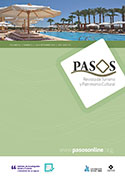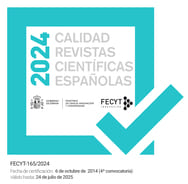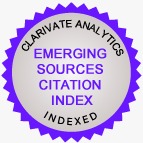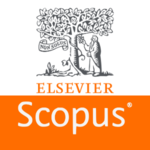Aplicación de la teoría de las partes interesadas y el análisis de redes sociales al estudio del capital social de los destinos turísticos
DOI:
https://doi.org/10.25145/j.pasos.2025.23.041Palabras clave:
Capital Social, Teoría de los Stakeholders, Análisis de Redes Sociales, destino turístico, gestión turística, Pátzcuaro (México)Resumen
Este estudio integra la Teoría de los Stakeholders y el Análisis de Redes Sociales para evaluar y fortalecer el capital social en destinos turísticos. Centrándose en Pátzcuaro, México, un "Pueblo Mágico", descubre una compleja red de relaciones caracterizada por niveles moderados de confianza y colaboración, con funcionarios públicos como actores puente clave. Aunque el Comité de los Pueblos Mágicos muestra una fuerte cohesión interna, sigue habiendo problemas para integrar a las partes interesadas periféricas y fomentar una estructura de gobernanza más inclusiva. Los resultados ponen de relieve la importancia de las relaciones sociales preexistentes en la planificación turística y proporcionan un marco reproducible para mejorar la colaboración entre las partes interesadas y reforzar la gobernanza en los destinos turísticos. Al combinar métodos cuantitativos y cualitativos, este estudio contribuye a una comprensión más profunda de la dinámica de las redes sociales y sus implicaciones para el desarrollo del turismo sostenible. Sin embargo, hay que reconocer las limitaciones inherentes a cualquier estudio de caso. Futuras investigaciones podrían explorar la evolución de estas redes y examinar el impacto de intervenciones específicas para reforzar el capital social.
Descargas
Datos de publicación
Perfil evaluadores/as N/D
Declaraciones de autoría
- Sociedad académica
- PASOS. Revista de Turismo y Patrimonio Cultural
- Editorial
- Instituto Universitario de Investigación Social y Turismo. Universidad de La Laguna (España) - Instituto Universitario da Maia ISMAI (Portugal)
Citas
Arriagada, I., Miranda, F., & Pávez, T. (2004). Lineamientos de acción para el diseño de programas de superación de la pobreza desde el enfoque del capital social. Guía conceptual y metodológica. Santiago de Chile: CEPAL.
Atria, R. (2003). Capital social: concepto, dimensiones y estrategias para su desarrollo. In R. Atria, M. Siles, I. Arriagada, L. J. Robison, S. Whiteford (eds.). Capital social y reducción de la pobreza en América Latina y el Caribe: en busca de un nuevo paradigma (pp. 581-590). Santiago de Chile: CEPAL.
Baggio, R. (2017). Network science and tourism – the state of the art. Tourism Review 72(1), 120-131
Baggio, R. (2020). Tourism destinations: A universality conjecture based on network science. Annals of Tourism Research, 82, 102929.
Baggio, R. (2022). Network Analysis. In: Egger, R. (eds) Applied Data Science in Tourism. Tourism on the Verge. Springer, Cham. https://doi.org/10.1007/978-3-030-88389-8_21
Ballina, F. J. (2020). El protocolo “network” aplicado al estudio de los destinos turísticos: el caso de Gijón (España). Estudios Geográficos, 81 (288), e041
Bourdieu, P. (1985). The forms of capital. In J. Richardson (ed). Handbook of Theory and Research for the Sociology of Education (pp. 241-258). New York: Greenwood Press.
Cacciutto, M., & Barbini, B. (2012). Cultura y capital social en comunidades locales: el caso de la comunidad italiana del barrio Puerto de Mar del Plata. Estudios y Perspectivas en Turismo, 21(3), 681-705.
Casado-Montilla, J. & Pulido-Fernández, J.I. (2024). Social network analysis and tourism vocation in a coopetitive environment. Tourism Recreation, in press. DOI: 10.1080/02508281.2024.2330230
Castellicci, D. (2013). Empresas, capital social y calidad. Un estudio de casos múltiples en Mar del Plata, Argentina. Estudios y Perspectivas en Turismo, 6, 1096-1120.
Cehan, A., Eva, M., & Iațu, C. (2021). A multilayer network approach to tourism collaboration. Journal of Hospitality and Tourism Management, 46, 316-326.
Choi, S. (2013). Impact of Social Capital on Community-Based Tourism Development Performance: Focused o Green Rural Tourism Village. Journal of Tourism Sciences, 37(4), 77-96.
Coleman J. 1990. Foundations of Social Theory. Cambridge, Massachusetts: Belknap Press and Harvard University Press.
Coleman, J. S. (1988). Social Capital in the Creation of Human Capital. The American Journal of Sociology, 94 (Supplement: Organizations and Institutions: Sociological and Economic Approaches to the Analysis of Social Structure), S95-S120.
Cruz, G., & Pulido-Fernández, J.I. (2012). Dinámica relacional interorganizacional para el desarrollo turístico. Los casos de Villa Gesell y Pinamar (Argentina). Revista de Estudios Regionales, (94): 167-194.
Cuevas, T. J. (2007). Gestión-red del desarrollo local. Una aplicación al turismo alternativo en el noreste de Chihuahua. PhD thesis, México, Universidad Nacional Autónoma de México.
Currie, R. R., Seaton, S., & Wesley F. (2009). Determining stakeholders for feasibility analisis. Annals of Tourism Research, 36(1), 41-63.
Czernek-Marszałek, K. (2018). Cooperation evaluation with the use of network analysis. Annals of Tourism Research, 72, 126-139.
Damayanti, M., Tyas, W.P., & Aswad, W.O.S.J. (2021). Conceptualizing multi actors’ collaboration in smart tourism destination. IOP Conference Series. Earth and Environmental Science, 673(1): 012027. doi:10.1088/1755- 1315/673/1/012027.
Durston, J. (2000). ¿Qué es el capital social comunitario? Vol. Serie Políticas Sociales N° 38. Santiago de Chile: CEPAL.
Durston, J. (2002). El capital social campesino en la gestión del desarrollo rural. Díadas, equipos, puentes y escaleras. Santiago de Chile: CEPAL.
Durston, J. (2003). Capital social: parte del problema, parte de la solución, su papel en la persistencia y en la superación de la pobreza en América Latina y el Caribe. In R. Atria, M. Siles, I. Arriagada, L. J. Robison, & S. Whiteford (eds).Capital social y reducción de la pobreza en América Latina y el Caribe: en busca de un nuevo paradigma (pp. 147-202). Santiago de Chile: CEPAL.
Éber, F. Z., Baggio, R., & Fuschs, M. (2018). Hyperlink network analysis of a multi destination region: the case of Halland, South Sweden. Information Technology and Tourism, 20, 181-188.
Farsani, N. T., Coelho, C., & Costa, C. (2014). Analysis of Network Activities in Geoparks as Geotourism Destinations. International Journal of Tourism Research, 16(1), 1-10.
Flores, M., Rello, F. (2002). Capital social rural. Experiencias en México y Centroamérica. México: Universidad Nacional Autónoma de México and Plaza Valdés Editores.
Fox, J. (1996). How does civil society thicken? The political construccion of social capital in rural México. World Development, 24(6), 1089-1103.
Freeman, R. E. (1984). Strategic management: a stakeholder approach. Boston: Pitman.
Fukuyama, F. (2003). Capital social y desarrollo: la agenda venidera. In R. Atria, M. Siles, I. Arriagada, L. J. Robison, S. Whiteford (eds.). Capital social y reducción de la pobreza en América Latina y el Caribe: en busca de un nuevo paradigma (pp. 33-48). Santiago de Chile: CEPAL.
Fukuyama, F. (2001). Social capital, civil society and development. Third World Quartely, 22(1), 7-20.
Gan, C., Voda, M., Wang, K., Chen, L., & Ye, J. (2021). Spatial network structure of the tourism economy in urban agglomeration: A social network analysis. Journal of Hospitality and Tourism Management, 47: 124-133. https://doi.org/10.1016/j.jhtm.2021.03.009
Gibson, L., Lynch, P. A., & Morrison, A. (2005). The local destination tourism network: Development issues. Tourism and Hospitality Planing & Development, 2(2), 87-99.
Graburn, N., & Jafari, J. (1991). Introduction: Tourism social science. Annals of Tourism Research, 18(1), 1-11.
Grängsjö, Y. V., & Gummesson, E. (2006). Hotel networks and social capital in destination marketing. International Journal of Service Industry Management, 17(1), 58-75.
Gregory, A., Atkins, J. P., Midgley, G., & Hodgson, A. (2020). Stakeholder identification and engagement in problem structuring interventions. European Journal of Operational Research, 283, 321-340.
Grootaert, C., & van Bastelaer, T. (2002). Understanding and Measuring Social Capital: A Multidisciplinary Tool for Practitioners. Washington, D.C.: The World Bank
Grootaert, C., Narayan, D., Jones, V. N., & Woolcock, M. (2004). Measuring Social Capital. An Integrated Questionnaire. Washington, D.C.: The World Bank
Heidari, A., Yazdani, H. R., Saghafi, F., & Jalilvand, M. R. (2018). A systematic mapping study on tourism business networks. European Business Review, 30 (6), 676-706.
Hristov, D., Monocha, S., & Ramkissoon, H. (2018). Transformation of destination leadership networks. Tourism Management Perspectives, 28, 239-250.
INEGI. 2016. Tabulados de la Encuesta Intercensal 2015. http://www.inegi.org.mx/programas/intercensal/2015/default.html (accesed January 8th, 2025).
INEGI. 2020. Marco geoestadístico. Available at: http://cuentame.inegi.org.mx/mapas/pdf/entidades/div_municipal/michmpioscolor.pdf (accesed January 08th, 2025).
Johannesson, J. P., Skaptadóttir, U.D., & Benediktsson, K. (2003). Coping with social capital? The cultural economy of tourism in the north. Sociologia Ruralis, 43(1), 3-16.
Jones, S. (2005). Community-based ecotourism. The significance of social capital. Annals of Tourism Research, 32(2), 303-324.
Kluviinkova-Oravska, T., & Chobotova, V. (2006). Shifting Governance. Managing the Commons: The Case of Slovensky Raj National Park. Sociologia, 38(3), 221-244.
Krishna, A., & Shrader, E. (2000). Cross Cultural Measures of Social Capital: A Tool and Results from India and Panama. Social Capital Initiative Working Paper, (21).
Laing, J. H., Lee, D., Moore, S. A., Wegner, A., & Weiler, B. (2009). Advancing conceptual understanding of partnerships between protected area agencies and the tourism industry: a post disciplinary and multi-theoretical approach. Journal of Sustainable Tourism, 17(2), 207-229.
Lee, H. (2014). A study on the Relationship between the formation of Social Capital and Quality of Life through Social Tourism. Journal of Tourism and Leisure Research, 26(3), 45-62.
Ledesma, O., Merinero-Rodríguez, R., & Pulido-Fernández, J.I. (2021). Tourist destination development and social network analysis: What does degree centrality contribute? International Journal of Tourism Research, (in press).
Ledesma, O., Merinero‐Rodríguez, R., & Pulido‐Fernández, J. I. (2022). Actor Networks and Development of Cultural Tourist Destinations. In: de Almeida, C. R., Martins, J. C. Gonçalves, A. R., Quinteiro, S., & Gasparini, M. L. Handbook of Research on Cultural Tourism and Sustainability. IGI Global, Hershey PA, U.S.A. ISSN: 2475-6547
Liu, J.Y., Qu, H.L., Huang, D.Y., Chen, G.Z., Yue, X., & Zhao, X.Y., et al. (2014). The role of social capital in encouraging residents´ pro-enviromental behaviors in community-based ecotourism. Tourism Management, 41, 190-201.
López-Molina, D. & Pulido-Fernández, J.I (2024) Analysis of the interaction and collaboration of the actors of a tourist destination from a network perspective, Current Issues in Tourism, 27:10, 1572-1589, DOI: 10.1080/13683500.2023.2214356.
Macedo, I. (2009). Two decades of social capital: Where is this concept going? The International Journal of Interdisciplinary Social Sciences, 4(1), 242-257.
Mariani, M., & Baggio, R. (2020). The relevance of mixed methods for network analysis in tourism and hospitality research. International Journal of Contemporary Hospitality Management, 32(4), 1643-1673
Mbaiwa, J. E., & Stronza, A. L. (2010). The effects of tourism development on rural livelihoods in the Okavango Delta, Botswana. Journal of Sustainable Tourism 18(5), 635-656.
McGehee, N.G., Lee, S., O´Bannon, T. L., & Perdue, R. R. (2010). Tourism-related Social Capital and Its Relationship with Other Forms of Capital: An Exploratory Study. Journal of Travel Research, 49(4), 486-500.
McLeod, M. (2020). Understanding knowledge flows within a tourism destination network. Journal of Hospitality and Tourism Insights, 3(5), 549-566.
Mehrizi, M., Ghasemzadeh, F., & Molas-Gallart, J. (2009). Stakeholder Mapping as an Assessment Framework for Policy Implementation. Evaluation, 15(4), 427-444.
Merinero-Rodríguez, R., & Pulido-Fernández, J. I. (2016). Analysing relationships in tourism: A review. Tourism Management, 54, 122-135.
Minnaert, L., Maitland, R., & Miller, G. (2009). Tourism and social policy. The value of social tourism. Annals of Tourism Research, 36(2), 316-334.
Mitchell, R. K., Agle, B. R., & Wood, D. J. (1997). Toward a theory of a stakeholders identification and salience: defining the principle of who and what really counts. Academy of Management Review, 22(4), 853-886.
Montanari, A., & Staniscia, B. (2010). Rome: a difficult path between tourist pressure and sustainable development. Rivista di Scienze del Turismo, 2, 301-316.
Mura, P., & Tavakoli, R. (2014). Tourism and social capital in Malaysia. Current Issues in Tourism 17(1), 28-45.
Muñoz, A. (2012). Análisis relacional de sistemas turísticos. Un marco de trabajo alternativo en el proceso de planificación turística. Tourism & Management Studies, (8): 55-64.
Muñoz, A., & Fuentes, L. (2013). La cooperación público privada en el ámbito de la promoción de los destinos. El análisis de redes sociales como propuesta metodológica. Cuadernos de Turismo, (31), 199–223.
Nguyen, T.Q.T., Johnson, P., & Young, T. (2022). Networking, coopetition and sustainability of tourism destinations. Journal of Hospitality and Tourism Management, 50, 400-411. https://doi.org/10.1016/j.jhtm.2022.01.003
Nguyen, T. Q. T., Young, T., Johnson, P., & Wearing, S. (2019). Conceptualising networks in sustainable tourism developments. Current Issues in Tourism, 32, 100575.
Nogueira, S., & Pinho, J. C. (2015). Stakeholder Network Integrated Analysis: The Specific Case of Rural Tourism in the Portuguese Peneda-Gerês National Park. International Journal of Tourism Research, 17(4), 325-336.
Okazaki E. 2008. A community-based tourism model: Its conception and use. Journal of Sustainable Tourism 16(5): 511-529.
Park, D. B., Lee, K. W., Choi, H. S., & Yoon, Y. (2012). Factors influencing social capital in rural tourism communities in South Korea. Tourism Management, 33(6), 1511-1520.
Park, D. B., Nunkoo, R., & Yoon, Y. S. (2015). Rural residents’ attitudes to tourism and the moderating effects of social capital. Tourism Geographies, 17(1), 112-133.
Park, D., Lee, G., Kim, W. G., & Kim, T. T. (2019). Social Network Analysis as a Valuable Tool for Understanding Tourists’ Multi-Attraction Travel Behavioral Intention to Revisit and Recommend. Sustainability, 11, 2497.
Pearce, D.G. 2014. Toward an integrative conceptual framework of destinations. Journal of Travel Research, 53(2), 141-153.
Pulido-Fernández, J. I. (2010). Las partes interesadas en la gestión turística de los parques naturals andaluces. Identificación de interrelaciones e intereses. Revista de Estudios Regionales 88, 147-175.
Pulido-Fernández, J. I., Merinero-Rodríguez, R. (2018). Destinations' relational dynamic and tourism development. Journal of Destination Marketing and Management, 7, 140-152. DOI: 10.1016/j.jdmm.2016.09.008.
Putnam, R. (1993). Making Democracy Work. Civic Traditions in Modern Italy. New Jersey: Princeton University Press.
Rodríguez, J. (2005). Análisis estructural y de redes. (Cuadernos Metodológicos 16), second ed. Madrid: Centro de Investigaciones Sociológicas.
Ruggieri, G., Iannolino, S., & Baggio, R. (2022). Tourism destination brokers: A network analytic approach. Annals of Tourism Research, 97, 103488. https://doi.org/10.1016/j.annals.2022.103488
Sainaghi, R., & Baggio, R. (2014). Structural social capital and hotel perfomance: Is there a link? International Journal of Hospitality Management, 37, 99-110.
Saraniemi, S., & Kylänen, M. (2011). Problematizing the concept of tourism detination: an analysis of different theoretical approaches. Journal of Travel Research, 50(2), 133-143.
Scott, N., Cooper, C., & Baggio, R. (2008). Destination Networks: Four Australian Cases. Annals of Tourism Research, 35(1), 169-188
SECTUR. 2009. Pueblos Mágicos. Reglas de operación. https://transparencia.info.jalisco.gob.mx/sites/default/files/Reglas%20de%20Operaci%C3%B3n%20Programa%20Pueblos%20M%C3%A1gicos.pdf (accesed January 08th, 2025).
Shang, Y., Pallares-Barbera, M., Romagosa, F. (2023). Coordination Mechanism of Stakeholders in Tourism Destinations: A Social Network Analysis Exploration. In: Gartner, W.C. (eds) New Perspectives and Paradigms in Applied Economics and Business. Springer Proceedings in Business and Economics. Springer, Cham. https://doi.org/10.1007/978-3-031-23844-4_26.
Uphoff, N., & Wijayaratna, C. M. (2000). Demonstrated benefits from social capital: The productivity of farmer organizations in Gal Oya, Sri Lanka. World Development, 28(11), 1875-1890.
Valeri, M., & Baggio, R. (2021). Social network analysis: organizational implications in tourism management. International Journal of Organizational Analysis, DOI: 10.1108/IJOA-12-2019-1971.
Velázquez, O. A., y Aguilar, N. (2005). Manual introductorio al análisis de redes sociales. Recuperado el 14 de junio de 2024, de REDES, Revista Hispana para el análsis de redes sociales: http://revista-redes.rediris.es/webredes/talleres/Manual_ARS.pdf
Woolcock, M. (1998). Social capital and economic development: Toward a theoretical synthesis and policy framework. Theory and Society, 27(2), 151-208.
Woolcock, M., & Narayan, D. (2000). Capital social: implicaiones para la teoría, la investigación y las políticas sobre desarrollo. World Bank Research Observer, 15(2), 225 -249.
Yong-Soon, P. (2014). The Relationship between Social Capital and Community Integration in Rural Tourism Development: Focused on Interviews with Rural Community Leaders. Journal of Tourism Sciences, 38(5), 206-228.
Zahra, A., & McGrehee, N. G. (2013). Volunteer tourism: a host community capital perspective. Annals of Tourism Research, 42, 22-45.
Zee, E. van der, & Vanneste, D. (2015). Tourism Networks unravelled; a review of the literature on networks in tourism management studies. Tourism Management Perspectives, 15, 46-56.
Zhao, W. B., Ritchie, J. R. B., & Echtner, C. M. (2011). Social capital and tourism entrepreneurship. Annals of Tourism Research, 38(4), 1570-1593.
Descargas
Publicado
Cómo citar
Número
Sección
Licencia
Derechos de autor 2025 Ismael Manuel Rodríguez-Herrera, Jairo Casado Montilla, Diana, Juan Ignacio Pulido-Fernández

Esta obra está bajo una licencia internacional Creative Commons Atribución-NoComercial-SinDerivadas 4.0.
Confirmo que el trabajo es original (de mi/nuestra autoría), y que no se someterá a otras revistas o publicaciones hasta la resolución definitiva del proceso de revisión en PASOS, RTPC.
Autorizo la publicación de mi trabajo por PASOS, RTPC de acceso abierto y gratuito en cualquiera de los formatos que estime oportunos, por un plazo indeterminado y a título de colaboración no remunerada.
Asimismo, el/los autor/es entiende/n que el trabajo publicado podrá vincularse o depositarse en cualquier servidor o ser incluido en otras publicaciones (republicación), siempre y cuando el nuevo lugar y/o la nueva edición referencie la publicación original y reconozca la autoría y la propiedad del copyright de las publicaciones de PASOS RTPC.
Los/as autores/as entienden que se realizará una comprobación de plagio-autoplagio, pudiendo retirarse el artículo en cualquier momento del flujo editorial










